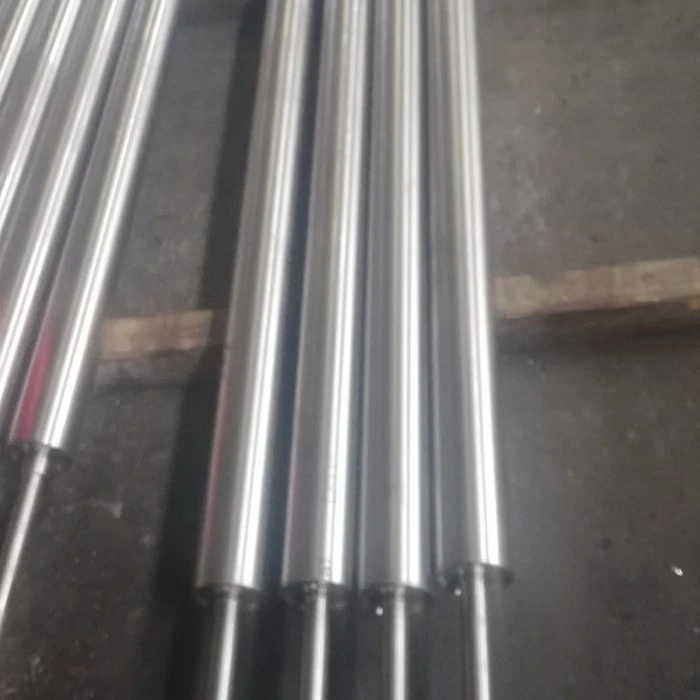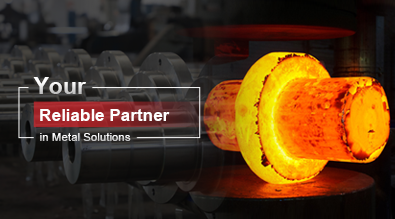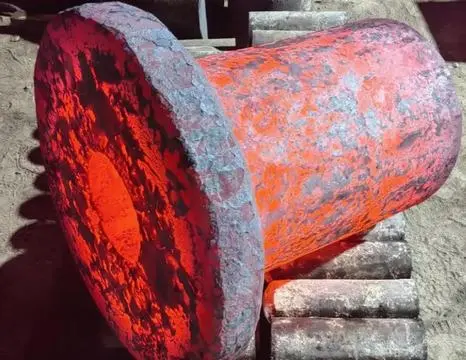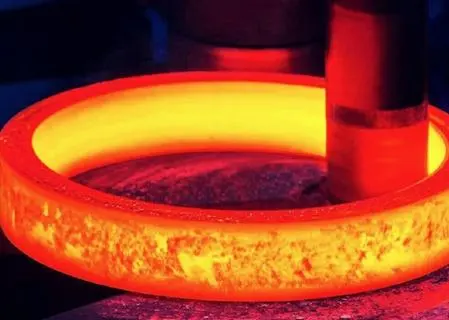Advanced Lubrication Technologies for Furnace Rolls
High-Temperature Synthetic Lubricants
The development of high-temperature synthetic lubricants has revolutionized furnace roll maintenance. These advanced formulations are engineered to withstand extreme temperatures without breaking down or evaporating. Synthetic lubricants offer superior thermal stability, oxidation resistance, and film strength compared to traditional mineral-based oils. They form a protective layer on the roll surface, reducing metal-to-metal contact and minimizing wear even under the most demanding conditions. Some synthetic lubricants can maintain their properties at temperatures exceeding 1000°C, making them ideal for use in various industrial furnace applications.
Solid Lubricant Coatings
Solid lubricant coatings represent another cutting-edge solution for furnace roll protection. These coatings, often composed of materials like molybdenum disulfide or graphite, are applied directly to the roll surface. They provide a low-friction barrier that can withstand high temperatures and pressures without melting or degrading. Solid lubricant coatings are particularly effective in environments where liquid lubricants may be impractical or ineffective. They offer long-lasting protection and can significantly reduce the frequency of relubrication, leading to improved operational efficiency and reduced maintenance costs.
Nanotechnology-Enhanced Lubricants
The integration of nanotechnology into lubricant formulations has opened new possibilities for furnace roll protection. Nano-enhanced lubricants contain microscopic particles that can fill in surface irregularities on the roll, creating an ultra-smooth surface that reduces friction and wear. These nanoparticles can also act as tiny ball bearings, further reducing friction between moving parts. Some nanoparticles exhibit self-healing properties, automatically repairing minor surface damage and extending the lubricant's effective lifespan. As research in this field progresses, nanotechnology-enhanced lubricants are poised to become an increasingly important tool in furnace roll maintenance strategies.
Automated Lubrication Systems for Consistent Protection
Centralized Lubrication Systems
Centralized lubrication systems offer a comprehensive solution for maintaining optimal lubrication across multiple furnace rolls simultaneously. These systems use a network of pipes and pumps to deliver precise amounts of lubricant to each roll at predetermined intervals. By automating the lubrication process, centralized systems ensure consistent coverage and eliminate the risk of human error associated with manual lubrication. They can be programmed to adjust lubrication frequency and volume based on operating conditions, optimizing lubricant usage and enhancing roll protection. Centralized systems also improve safety by reducing the need for personnel to access hazardous areas for manual lubrication tasks.
Intelligent Monitoring and Feedback Systems
Advanced lubrication strategies now incorporate intelligent monitoring and feedback systems to further enhance furnace roll protection. These systems use sensors to continuously monitor factors such as temperature, vibration, and lubricant flow rates. By analyzing this data in real-time, the system can detect potential issues before they escalate into serious problems. For example, if a roll begins to show signs of increased friction or temperature, the system can automatically adjust lubrication parameters or alert maintenance personnel. This proactive approach helps prevent unexpected failures and extends the operational life of furnace rolls.
Remote Control and Cloud-Based Management
The integration of remote control and cloud-based management capabilities has transformed furnace roll lubrication strategies. These systems allow operators to monitor and adjust lubrication parameters from anywhere, using smartphones or computers. Cloud-based platforms can store and analyze historical lubrication data, providing valuable insights for optimizing maintenance schedules and predicting potential issues. Remote management also enables rapid response to changing conditions, allowing operators to make adjustments in real-time without being physically present at the furnace. This level of control and flexibility is particularly valuable in large industrial operations with multiple furnaces or facilities spread across different locations.
Innovative Cooling Methods to Enhance Lubrication Effectiveness
Internal Cooling Systems
Internal cooling systems represent a significant advancement in furnace roll protection. These systems circulate coolant through channels within the roll itself, helping to maintain a more consistent temperature throughout the roll body. By reducing thermal stress and preventing localized hot spots, internal cooling enhances the effectiveness of lubricants and extends the life of the roll. Advanced internal cooling designs can use various coolants, including water, oil, or even specialized heat transfer fluids, depending on the specific application and temperature requirements. Some systems incorporate multiple cooling zones, allowing for precise temperature control across different sections of the roll.
Mist Cooling and Lubrication
Mist cooling and lubrication systems offer a unique approach to furnace roll protection, combining cooling and lubrication in a single process. These systems use high-pressure nozzles to atomize a mixture of lubricant and coolant, creating a fine mist that is applied directly to the roll surface. The mist provides both cooling through evaporation and lubrication through the deposition of lubricant particles. This method is particularly effective in high-temperature environments where traditional liquid lubricants may break down or evaporate too quickly. Mist systems can provide more uniform coverage compared to conventional lubrication methods, ensuring consistent protection across the entire roll surface.
Thermal Barrier Coatings
Thermal barrier coatings (TBCs) represent an innovative approach to enhancing furnace roll protection. These advanced materials, typically ceramic-based, are applied to the roll surface to create an insulating layer that reduces heat transfer to the roll body. By lowering the operating temperature of the roll, TBCs can significantly extend the life of lubricants and reduce thermal stress on the roll structure. Some TBCs also offer additional benefits such as improved corrosion resistance and reduced friction. The development of new TBC materials and application techniques continues to expand the potential applications for this technology in furnace roll protection strategies.
In conclusion, the most effective lubrication strategies for furnace rolls involve a combination of advanced technologies, automated systems, and innovative cooling methods. By implementing these strategies, industries can significantly improve the performance and longevity of their furnace rolls, leading to increased productivity and reduced maintenance costs. As technology continues to evolve, new opportunities for enhancing furnace roll protection are likely to emerge, further optimizing industrial processes across various sectors. For more information on furnace rolls and customized metal parts for high-temperature applications, please contact us at info@welongpost.com.




